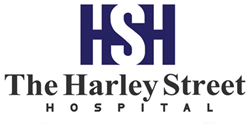Scoliosis is a three-dimensional abnormal curvature of the spine that can be produced by uneven shoulders or hips, protruding ribs, or the prominence of one shoulder paddle over the other.
According to the degrees that present the curvature in the spine, which will be measured through the method known as the Cobb angle, the doctor will decide what type of treatment is needed. A curvature of 10 to 15 degrees, only requires medical checks; between 20 and 40 degrees, the use of an orthopedic brace is recommended and when it reaches 40, 50 or more degrees, a surgery is performed for scoliosis, in order to correct the problem.
Orthopedic brace
The conservative treatment of scoliosis through the use of orthoses is under the responsibility of the orthotist who must provide a column brace with optimal fit and functional, in order to achieve the goals of the orthotic intervention to reduce or maintain the Cobb angle and improve the clinical presentation of the patient at the end of skeletal growth.
Surgical treatment
Scoliosis surgery, seeks to straighten the spine and decrease the curvature that the patient has. To do this, multiple screws are installed in the column, which is joined together through bars.
The development of new techniques allows reducing the risk of neurological damage, since during surgery the specialists are monitoring at every moment.
This procedure is indicated after analyzing several factors such as the age of the patient, the degree of curvature or deformity of the spine, whether or not there is pain and the skeletal maturity of the individual.
Usually the hospitalization period is from 5 to 6 days, but by the third day after surgery, ambulation should begin. This implies that the patient should get out of bed and walk with help initially.
Once at home, the relative rest period in patients younger than 25 years is usually three weeks. If it is an older patient, the periods of both hospital stay and recovery may be a little longer.
The performance of physical activity can take between four months and a year, depending on each case. Surgery as a treatment for scoliosis has risks and benefits. Regarding the risks, these are currently quite controlled and are the usual for any type of intervention: infection of the surgical wound, some problems of healing or that the vertebrae in the long term do not stick with each other what can cause that the curve increases again, but this is very exceptional.
With all the above, the surgery of these patients is challenging, however not only is it possible to stop the progression of the curve, but also the associated consequences.



















